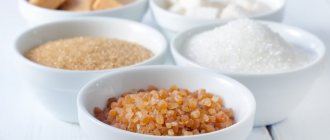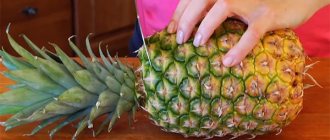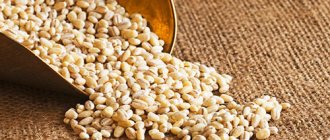- Is it possible to eat borscht
- How to cook borscht for nursing mothers
- How to properly introduce a dish into your diet
- Green borscht recipe for nursing
With the birth of a newborn, many women limit their diet, and borscht is one of the first to be banned. In the first month this is justified, because... food for a nursing mother should not contain allergenic products such as beets, tomatoes, cabbage, carrots. But already at three months, when the baby has adapted a little, a nursing mother can eat green and red borscht. Next, we’ll take a closer look at: is it possible to eat borscht while breastfeeding, how to do it correctly, a recipe for healthy green borscht.
Borscht in the diet
Breastfeeding women are advised to stick to a diet and avoid:
- flour and semi-finished products;
- highly fried or fatty foods;
- overly salted and seasoned foods;
- alcohol and carbonated drinks;
- “colored” foods that can cause allergies.
Restrictions for a nursing mother, in most cases, are strictly individual. If a woman did not have allergies before giving birth and during pregnancy, you can start eating borscht 3-4 months after the birth of the child. At first, literally eat 2-3 spoons. If after 1.5-2 days the baby does not have rashes or other negative reactions, the dish is introduced into the diet, albeit in limited doses.
When can you eat borscht during lactation?
For the first three months, the baby’s body is weak and is just beginning to adapt to new conditions. Therefore, at this time it is better to adhere to a special diet. It is not very strict, but it still requires you to give up many of your favorite foods. You cannot eat highly fatty and fried foods, flour, processed foods, drink alcohol, or carbonated drinks.
In the fourth month, new foods are introduced into the diet of a nursing mother. Some doctors recommend eating borscht only six months after giving birth. But if the borscht is low-fat and the baby does not have allergies, then you can start eating earlier.
For the first time, eat one spoon of soup in the morning. The next two days will show whether the baby has a negative reaction or not.
Unfortunately, your baby may be allergic to borscht. The soup contains beets, tomatoes, tomato paste and cabbage. These products contain strong allergens. In addition, cabbage and beets are difficult vegetables for a newborn’s still fragile digestion. Therefore, because of this soup, the child sometimes experiences colic, increased gas production and other stomach upsets.
If a baby has a negative reaction, you will have to postpone introducing borscht into the diet for at least two months. During this time, the body will become even stronger and will be able to accept this dish.
What happens if you eat borscht during lactation?
As mentioned above, borscht will not harm during lactation if the mother and child are absolutely healthy. But even in this case, it is worth familiarizing yourself with the following information:
- It is recommended to check the child’s body’s reaction to the ingredients of borscht. How to do it? Very simple. First, beets are introduced into the mother’s diet, then how the baby behaves is observed for 2-3 days. If his digestive system reacted positively, there are no rashes on the skin and mucous membranes, then the nursing mother can add beets to her dishes.
- When checking the body's reaction to a particular product, it is processed in the same way as when cooking borscht. For example, if boiled beets are added to a dish, then testing is carried out with boiled beets.
- Use cabbage and dishes with it with caution. A nursing mother may not experience discomfort, but the baby may experience intestinal problems from borscht with cabbage: indigestion, flatulence, diarrhea, etc.
If a baby has a negative reaction to some component of borscht, then you should avoid it. If the body reacts negatively to beets, they are not added to the dish at all, the same goes for bell peppers and parsley. When there is a negative reaction to tomato or cabbage, you should cook not traditional borscht, but with sorrel, which does not contain these ingredients.
How to properly introduce a dish into your diet
It is recommended to start adding borscht to your diet in small portions. They do this in the morning and monitor the condition of the baby for two days. If everything is fine, then they continue to eat the first thing, but in moderation.
To minimize risks, it is better to try all components separately in advance. Products are consumed in the same form in which they will be present in the dish. Thus, you can immediately identify and exclude those foods that cause discomfort in your baby, and create an individual recipe.
We offer a recipe for mothers who have the opportunity to prepare clean and environmentally friendly vegetables for dressing in borscht for the winter.
Does the method of cooking affect lactation?
When considering the question of whether borscht is allowed for a nursing mother, one cannot ignore such a nuance as the method of preparing it. Doctors believe that when preparing a dish, it is quite possible to cook it so that it does not harm the body of mother and baby.
- For a nursing woman, it is preferable to create a menu of boiled foods.
- Sautéing onions and other ingredients is an excellent substitute for stewing.
- Sorrel borscht is healthy and will be an excellent alternative to the traditional one.
In general, borscht has a positive effect on the body and lactation. It contains meat, a source of protein, which is necessary for the synthesis of breast milk. Vegetables are rich in fiber, which improves digestion and helps relieve constipation. In addition to fiber, vegetables contain vitamins, microelements and minerals that are necessary for mother and baby.
Is it possible for nursing mothers to eat borscht?
Borscht is a tasty, healthy dish, but you need to be careful with it when breastfeeding a newborn. It is multi-component and contains foods that are difficult for the baby’s digestive system. Therefore, many women have doubts about whether breastfeeding women can have a dish with beets and when they can introduce it into the diet.
When breastfeeding at 2-3 months, the nursing mother can try the first one with cabbage or sorrel, one spoon at a time. If after two days the baby does not have any rashes or indigestion, it means that the food has benefited mother and baby.
What to do in the first month after childbirth
In the first month of breastfeeding, it is worth preparing green borscht with sorrel. It is healthy and does not contain components that cause allergies and digestive problems. As for other vegetables, it is important to know the following:
- It is useful to eat beets to prevent constipation, hemorrhoids and other intestinal problems. If you are afraid that the vegetable will cause allergies, it is partially or completely replaced with hypoallergenic zucchini. They are absolutely harmless, are considered a source of vitamins and can be consumed within 8-10 days after birth.
- If ordinary cabbage gives a woman or baby flatulence, it is quite acceptable to replace it with cauliflower or broccoli. White cabbage varieties cause intestinal colic and fermentation in the intestines. Broccoli and cauliflower do not have such properties, but they are rich in vitamin C and strengthen the immune system.
The benefits of sorrel for breastfeeding
Sorrel is a healthy plant that contains a large amount of vitamins A, B, C, E, PP, microelements, including iron, potassium, calcium, magnesium, oxalic and other plant acids, mineral salts, tannins, carotene, etc. d. Not every plant can boast of such a composition. Sorrel is known for the following properties:
- strengthens the immune system;
- helps cope with viral diseases;
- relieves itching from allergic rashes;
- relieves pain;
- helps with cough;
- reduces the risk of developing diabetes;
- improves vision;
- removes excess fluid from the body;
- strengthens bones and tooth enamel;
- accelerates growth;
- helps in the prevention of osteoporosis;
- strengthens blood vessels;
- normalizes digestion;
- increases hemoglobin levels;
- helps with diarrhea;
- removes toxins;
- helps with skin inflammation;
- relieves symptoms of lichen, etc.
Cooking borscht according to the rules
Which borscht is healthy and safe for breastfeeding?
- This should be a moderately fatty, non-spicy dish, where all the vegetables are boiled and steamed, without frying.
- To improve the taste, you can add seasonal fresh herbs or low-fat sour cream to the finished dish, and the latter cannot be replaced with mayonnaise.
- Tomato juice or paste is replaced with fresh tomatoes, preferably yellow or pale pink. They contain a minimum of lycopene, an allergen that gives the fruit its deep red color.
- Chicken, veal or beef are ideal for making broth. First, the meat is soaked for a couple of hours in cold water, changing it periodically. This will remove harmful components from the meat and make the flesh softer and more tender.
- When cooking broth, the first water after boiling is drained, and then fresh water is added. The first water will remove harmful substances, and the dish will turn out less fatty.
It is recommended to completely exclude seasonings from the diet of a nursing mother. The same goes for garlic and onions, which irritate the mucous membranes and can cause indigestion in the baby. To enhance the taste, use salt and bay leaves, rather than store-bought seasonings and spices.
Lenten borscht without cabbage: video recipe
Breastfeeding is an important period in the life of mother and baby, on which the future health of both depends. A pediatrician who observes the baby will help you decide whether borscht is possible during lactation. Also, a woman should carefully monitor her body and the child’s reaction to any new product. If there are no allergies or contraindications, borscht with beets is introduced into the menu 3 months after birth. If you have an allergic reaction to beets, you should limit yourself to preparing a dish with sorrel.
Borscht while breastfeeding
When feeding a child, women tend to give up many foods that are healthy and necessary for the body. Particular caution is understandable in the first months, but later many dishes can be eaten without fear. Among them is borscht during breastfeeding.
- Arguments for"
- When to include borscht in your diet
- Ingredients for borscht during lactation
- Cooking safe and healthy borscht
- Dr. Komarovsky about nutrition during lactation
Arguments for"
During lactation, you should not go on a strict diet if the baby is in good health. By depleting her diet, the mother deprives herself and her baby of healthy foods.
But it is through mother’s milk that he gets acquainted with most of the dishes, which he will then try on his own.
And the more varied the diet of a nursing mother, the easier it will be for the child to get used to adult food.
Borscht is useful during lactation due to:
• Rich set of proteins, fats and carbohydrates. They give strength, energy, and have a beneficial effect on digestion.
• Availability of fiber. Thanks to which toxins and other harmful elements leave the body.
• Content of vitamins and amino acids.
When to include borscht in your diet
Despite the benefits, you should not do this in the first month. It is better to start eating borscht when the baby is 3 months old.
Then his digestion will be more prepared for new foods.
You should start with a small amount. Ideally, from one spoon. You should try borscht before lunch. So by the evening you can see if the child has a negative reaction.
It is quite possible that she will appear. After all, the dish contains foods that are not the easiest for a baby: cabbage, beets, tomatoes, tomato paste.
Rejection of this dish can be expressed by skin rashes, increased gas formation or stool disturbances.
Useful tips for mothers: NUTRITION FOR A NURSING MOTHER
If there is an undesirable reaction, the soup should be postponed for some time. Minimum for 2 weeks.
Ingredients for borscht during lactation
There are special requirements for a dish for a nursing mother. It should not be greasy, spicy, or contain roasting and some other familiar ingredients.
Vegetables intended for roasting are best added fresh.
• Do not use industrial seasonings or add onions and garlic. Spicy food can worsen the taste of milk and adversely affect the baby's digestion.
It is best to limit yourself to salt and bay leaf. The latter should not be left in the borscht for longer than 10 minutes.
It is also acceptable to use fresh herbs and a small amount of sour cream.
• The most suitable types of meat: veal, beef, chicken.
• It is better to replace tomato paste with fresh, peeled tomatoes. Yellow varieties are best suited. They are the safest for babies.
• It will be healthier to use cauliflower instead of white cabbage. It contains more vitamins and is harmless to the child.
• The best ingredients are grown on our own plot. But if you don’t have it, it’s important to choose the freshest and most natural vegetables in the store.
Cooking safe and healthy borscht
How healthy and digestible borscht will be depends not only on its composition, but also on the method of preparation.
Here are some tips:
• Vegetables and meat are thoroughly washed. The meat is then soaked in cold water for about 2 hours.
• In order for the meat to retain more benefits, it is immersed in boiling water. After boiling for several minutes, drain the broth and add water again.
• Vegetables are added only after the meat is cooked.
• The soup is cooked over low heat, also to preserve most of the nutrients.
• Bay leaf is added 5 minutes before turning off the stove.
Dr. Komarovsky about nutrition during lactation
Often bans on certain dishes are associated not with the advice of doctors, but with public opinion.
The mother’s environment believes that she does not have the right to eat normally, sleep enough, or pay attention to her husband.
She must perform a feat: suffer, not eat and not sleep.
This point of view is typical for the post-Soviet space. In most developed countries, motherhood and nutrition during lactation are treated differently.
If the mother wants to eat something, she can do it. Without forgetting reasonable limits. For a baby and long-term breastfeeding, the most important thing is the mother’s attitude and mood.
If she eats enough, varied and with pleasure, she will be happy and cheerful. And she will produce enough milk.
If mother and child feel well and there is no reaction to new foods, there is no need to limit yourself.
If a child feels unwell after a certain food, any normal mother will notice this and stop eating that product.
Borscht is an opportunity to enrich your diet with a healthy and nutritious dish. If your child is already 3 months old, you can safely try it.
Special recommendations for selecting products and preparing dishes will help make borscht safe for nursing mothers and babies.
- about the author
- Recent publications
Arina Nagovitsyna
author of the publication (site editor)
JOURNALIST Higher education: Faculty of Journalism and Mass Communications
Arina Nagovitsyna recently published (see all)
- What can a child at 3 months - 09/12/2019
- What a 2 month old baby can do – 09/11/2019
- Which formula to choose when mixed feeding - 09/10/2019










